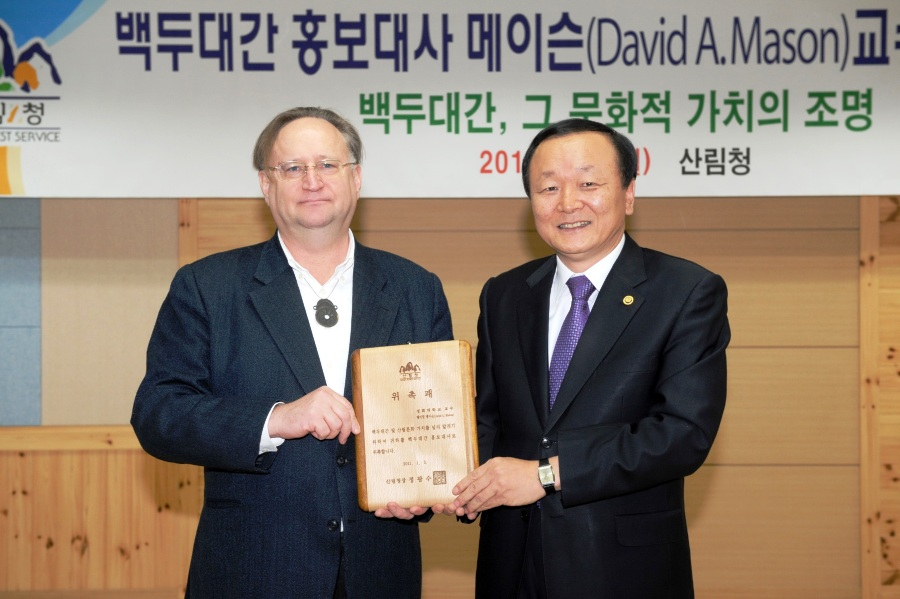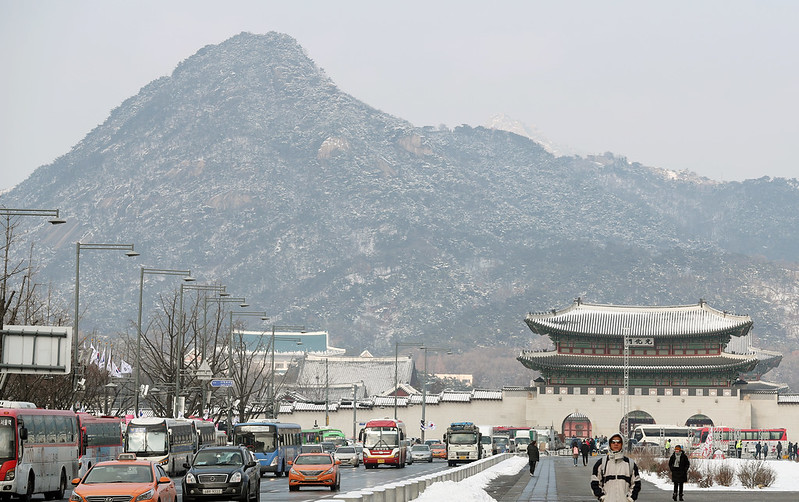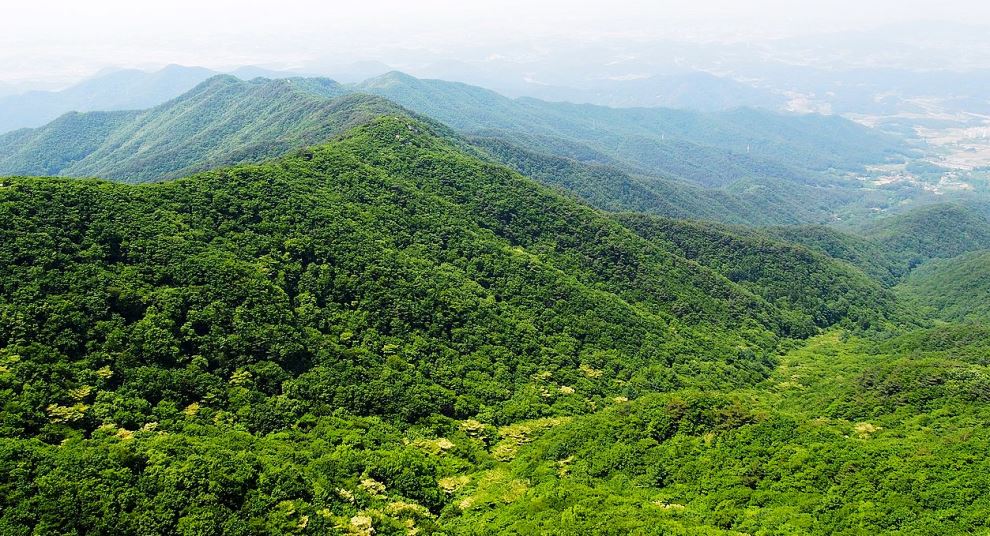- 한국어
- English
- 日本語
- 中文
- العربية
- Español
- Français
- Deutsch
- Pусский
- Tiếng Việt
- Indonesian
By Honorary Reporter Alaa Atef Ebada from Egypt
Photos = David A. Mason, Korea.net
David A. Mason, a professor of Korean and international cultural tourism at Sejong University in Seoul, first arrived in Korea in 1982 and grew fascinated with the nation's mountains. He went on to earn a master's degree in Korean studies from Yonsei University in Seoul with a focus on the nation's religious history and philosophy.
Long active in tourism in Korea, Mason has served as a tourism and public relations adviser to the Ministry of Culture, Sports and Tourism as well as a tour guide, while also lecturing on and writing several books on Korea.
I first saw him in on the Arirang TV interview show "Heart to Heart" and later followed his website on sacred Korean mountains. Thus I held an email interview with him on April 11.

David A. Mason in 2011 was named promotional ambassador of the Baekdu-daegan mountain range by the Korea Forest Service.
"When I finished college, two things really struck me. The rocky mountains and East Asian philosophies," he said. "When I visited Korea, I found many East Asian spiritual traditions flourishing in the valleys of the Korean mountains. In 1982, I discovered Sanshin or mountain spirit (a spirit inhabiting the mountain around which myths and spiritual religious beliefs revolve). I learned more about it and this became a personal hobby."

Bugaksan Mountain in 2017 stands behind the now former presidential compound of Cheong Wa Dae in Seoul's Jongno-gu District. (Korea.net)

Moaksan Mountain in Gimje, Jeollabuk-do Province, is home to several Buddhist temples. (David Mason)
The following are his top nine mountains to visit in Korea. "The number nine has always been one of the most sacred numbers in traditional Korean religions, which is why I used it here instead of the top 10 in the Western system," he said.
"Besides their amazing beauty, many of the nation's mountains have slopes filled with sacred places containing cultural art. The best time of the year for exploring them is between spring and fall because of the vibrant colors."
Bukhansan
Bukhansan Mountain is called the "guardian of Seoul" but the Bukhansan range comprises prominent peaks just north of downtown Seoul.
Seoraksan
Nicknamed "waterfall mountain," Seoraksan is steep and rugged but is still great for hiking, visiting temples, and enjoying the scenic nature and vivid colors. It is also easily accessible from four Seoul subway stations and bus stops.
Mountains in Gyeongju
Gyeongju, Gyeongsangbuk-do Province, was the ancient capital of the Silla Kingdom. The city is home to what are considered the nation's holiest mountains like Namsan, Tohamsan, Naksan, Sundosan and Sogeumgangsan.
Jirisan
Around a dozen big temples and traditional folk sites are in or around this mountain. Koreans usually say a fool who stays for a while on Jirisan's slopes turns into a sage. The mountain has the country's second-highest peak and many consider it the nation's most popular spot for mountaineering.
Hallasan
The highest mountain in Korea, Hallasan is at the center of Jeju Island. Baengnokdam Lake, the island's holiest site formed by a crater, is on this mountain as well as 14 Buddhist temples and a shrine on its forested lower slopes.
Sognisan
With a name literally meaning "far from the earthly world," this mountain is famous for housing the 600-year-old pine tree Jeongipumsong. Legend has it that this tree in 1464 raised its drooping branches so that King Sejo could pass in his chair below it. The king was touched and granted the tree the rank of minister.
Gyeryongsan
This mountain's name literally means "Rooster Dragon Mountain" because of its unique shape in which its main hills wrap around it like the body of a dragon, plus the 20 sharp peaks from afar look like roosters. The area includes three old Buddhist temples and many shrines.
Maisan
This mountain range's name means "Horse Ear Mountain," and at its foot between the two peaks are the famous Buddhist temples Tapsa, which features 80 stone structures, and Insusa. A strange phenomenon on Maisan is an upside-down snowflake, or an icy pole that points toward the sky when water is left in a bowl outside during winter.
Moaksan
This mountain is widely known in most forms of spiritual culture in Korea like those of Buddhism, Taoism and shamanism. The many Buddhist temples here include Geomsansa, one of the nation's greatest monasteries, and Moaksan Provincial Park is another attraction.
enny0611@korea.kr
*This article is written by a Korea.net Honorary Reporter. Our group of Honorary Reporters are from all around the world, and they share with Korea.net their love and passion for all things Korean.